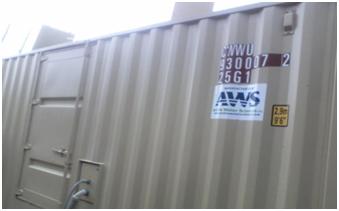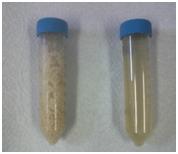05/22/2012
An all-inclusive system converts wastewater to consumable water.
Water, in many places, is becoming a matter of life and death. Many nations, especially developing nations, face a serious shortage of clean water and are most susceptible to water related disease. It has been reported that almost a billion people in the world lack access to safe water supplies (1), 3.575 million people die each year from water-related disease (2), and in developing countries, 90 percent of wastewater is discharged into rivers or streams without any treatment (3). Even developed nations—including the U.S., Spain, Australia and Singapore—are not exempt from clean water shortages. Unfortunately, problems do not end with water-related disease and water shortages, according to a report released from the Defense Intelligence Agency (DIA) in early 2012 (4). |
| Figure 1. Advanced integrated water recycling system |
 |
| Figure 2. Bacteria consortium (pellets and liquid) |
An Integrated Water Treatment System
Two companies developed and recently commercialized an advanced, integrated water reclaiming system (see Figure 1) to convert municipal/industrial wastewater into usable water with zero fecal Coliform and zero total Coliform (6). Because wastewater quality varies as a function of its source, the developed system incorporates a robust, broad spectrum bacteria consortium (developed and optimized by the two companies and shown in Figure 2), which can target specific contaminants for removal that are typically found in municipal wastewater and other industrial wastewater sources. The system has great flexibility to treat different wastewater streams for adherence to the ever-evolving U.S. Environmental Protection Agency standards. |
| Figure 3. The process diagram of the integrated water reclaiming system |
The integrated control system (see Figure 6) provides for autonomous operation through its ability to self regulate based on user-defined set points and continuous monitoring and control, which is beneficial for isolated installations. This advanced functionality of the system guarantees performance to better meet the application’s requirements. Table 1 shows the results of treating a local municipal wastewater stream using the integrated system. The untreated wastewater and recycled water are shown in Figure 7.
 |
 |
| Figure 4. Biofilm | Figure 5. Media |
 |
 |
| Figure 6. Automatic control system | Figure 7. Recycled water (left) and wastewater (right) |
 |
| Table 1. The integrated wastewater treatment system's contaminant removal |
- Pumps and fluid transport
- Air blowers and oxygen delivery systems
- Media/bacteria support substrates
- Tank and hydrodynamic design
- Processing monitoring and control system
- Data acquisition system
- UNICEF/WHO. 2008. Progress on Drinking Water and Sanitation: Special Focus on Sanitation.
- World Health Organization. 2008. Safer Water, Better Health: Costs, Benefits, and Sustainability of Interventions to Protect and Promote Health.
- http://matadornetwork.com/change/40-shocking-facts-about-water/.
- Global Water Security, INTELLIGENCE COMMUNITY ASSESSMENT, ICA 2012-08, 2 February 2012.
- Water Reuse Association, 2011 Potable reuse conference, Nov. 13-15, 2011, The Westin Diplomat Resort & SPA, Hollywood, Fla.
- APHA, AWWA and WEF, Standard Methods for the Examination of Water and Wastewater, 21th Edition 2005.
- U.S. EPA, Guidelines for Water Reuse, EPA Number: 625R04108, September, 2004.

